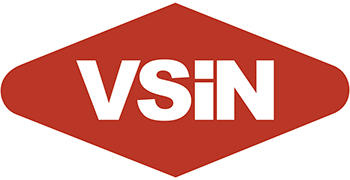Evaluating moves at the NFL trade deadline
When I was thirteen years old, playing Strat-O-Matic, a baseball card game, with my two best friends, Danny Reynolds and Michael Sannino, we would always pause the action for trade talks. We played this silly game from 8 a.m. until 1 or 2 in the morning, taking a few breaks to hit the beach, especially if we heard Linda Bosbeshell (our version of Wendy Peffercorn from Sandlot) was wearing her bikini.
***Top NFL Resources***
*Join thousands of other sports bettors and unlock access to picks, public betting splits data, & the VSiN live video broadcast by upgrading to VSiN Pro. Grab your first month for less than $10.*
- NFL Expert Picks
- NFL Betting Hub
- NFL 2024 Week-By-Week Schedule
- Parlay Calculator
- NFL Betting Splits
- NFL Betting Odds
Sitting around my mother’s kitchen table, we would try to make a trade that could win the day, as each day counted as a season. Because we put a time limit on the trade talks, the action could move quickly, depending on the desperation and status of our teams. Other times, it didn’t move, as each of us liked our current roster or felt the value wasn’t good. The thought process we used as teenagers is the same one that occurred yesterday during the final day NFL teams could make trades. Some teams got great value, some teams removed players who didn’t matter, and most teams hung up the phone as the offers were ridiculous.
Philadelphia wanted to be buyers in the market if they could win the trade—which is smart. Most teams wanting to make a move would only say yes if they won the trade, which is why, for all the hype, there was little action. The Eagles are aggressive when it comes to trades, but they behave with a safety margin, always asking can this decision absorb the double worse case scenario? When you build your trade decisions with a safety margin, you are in a position of strength. When you don’t, you make a dumb move, like the Bears.
Since we are a betting network, we only care about which team increased their chances of winning games and putting money in our pockets. By trading for Montez Sweat, did the Bears increase their odds of winning? You know the answer to that question. Keep fading the Bears as Sweat won’t make a difference toward winning or the spread. He couldn’t do it in Washington. Why would that change in Chicago?
By any data you might want to use to evaluate their defense, Washington has been well below average. They have a ton of first-round picks on the roster that don’t play like first rounders, and teams have been able to throw the ball at will on them, even with Sweat as a rusher. Don’t confuse Sweat being a good player with being a player that impacts the game. Sweat is good—every team would love to add him to their roster. His play can help a team win as long as there are other good players around him.
Sweat has played better than second second-overall pick from the 2020 draft, Chase Young. Young has only played in 32 games during his four-year career, producing 14 sacks, 26 quarterback hits and 19 tackles for loss. He has been a huge disappointment for the Commanders, considering they selected him before Chargers quarterback Justin Herbert.
The market clearly felt Sweat is more valuable than Young as the Bears paid a high price (a second-round pick) for Sweat—and the 49ers paid essentially nothing for Young. Yes, the 49ers gave away a third-rounder in the draft, which could be the compensatory pick they acquired when Ran Carthon accepted the Titans general manager position. Even if they didn’t have the extra compensatory pick, the 49ers will get back some compensation for Young if he signs elsewhere after the season.
Young might not have played well for the Commanders during his four seasons, but he will play better for the 49ers. He doesn’t have to be the dominating force on the 49ers front, as that role belongs to fellow Ohio State teammate Nick Bosa. Young going to San Francisco is much like when Andrew Wiggins went from the Minnesota Timberwolves to the Golden State Warriors. Wiggins was the first pick overall for the Timberwolves, coming with huge expectations. He was supposed to turn around the franchise’s fortunes. That never happened, in part because Wiggins cannot carry a franchise. He can add value to one.
The expectations for Wiggins were as unrealistic as they were for Young in DC. Now Young with the 49ers great defensive line coach Kris Kocurek will get Young to play at the highest level possible. After these next eight games, Young will either be what the draftniks thought he was before the draft or an average player.
Years ago, Vince Lombardi said, “blitzing was a sign of weakness.” Now, obviously, that statement is a tad outdated. However, It does have merit. When a team can rush four players and alter the quarterback’s timing and rhythm, the defense becomes dominating. With Young joining the other 49ers defensive linemen, they will never have to blitz, run zero coverage, and should affect the passer. I love this move for the 49ers and believe when they return from the bye week, their defense will return to their high level.
Not making a move for good teams doesn’t mean they cannot get where they want to go. As we turn the page to November, the teams that show improvement in terms of execution and fundamentals are the teams that finish strong. No one move makes you better. It takes daily improvement, so don’t overreact to the lack of moves by your team. Trades that didn’t or did happen when we played Strat-O-Matic never made the difference—the level of play always did.






